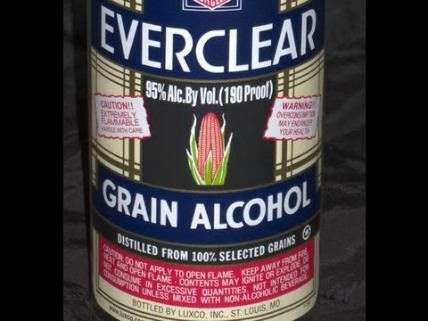Fentanyl-Laced Heroin and Other Deadly Consequences of Prohibition
How the government makes drugs more dangerous

Heroin spiked with fentanyl, a highly potent narcotic, was in the news this week because of recent overdose deaths in New York and Connecticut. In my latest Forbes column, I explain how prohibition makes heroin and other drugs more dangerous:
Remember the guy who bought 80-proof vodka that turned out to be 190-proof Everclear and died from alcohol poisoning? Probably not, because that sort of thing almost never happens in a legal drug market, where merchants or manufacturers who made such a substitution, whether deliberately or accidentally, would face potentially ruinous economic and legal consequences. In a black market, by contrast, customers frequently get something different from what they thought they were buying: something weaker, something stronger, or some other substance entirely. As The Washington Post notes in a recent story about fentanyl-laced heroin, the results can be fatal.
This phenomenon is so familiar by now that calling it an unanticipated consequence of prohibition suggests that people writing drug policy know nothing of its history. It may not even be accurate to call uncertainty about the contents of black-market drugs an unintended consequence of prohibition, since it serves prohibitionists' avowed goal of discouraging drug consumption. After all, the more dangerously unpredictable drugs are, the less likely people are to use them. That calculation, of course, sacrifices the interests, and sometimes the lives, of undeterred drug users for the sake of protecting more risk-averse people from their own bad decisions. But that is what prohibition is all about.
For anyone who doubts that making drugs more dangerous is an entirely predictable, if not intentional, result of prohibition, here are a few recent examples to consider, starting with the one highlighted by the Post.
Editor's Note: As of February 29, 2024, commenting privileges on reason.com posts are limited to Reason Plus subscribers. Past commenters are grandfathered in for a temporary period. Subscribe here to preserve your ability to comment. Your Reason Plus subscription also gives you an ad-free version of reason.com, along with full access to the digital edition and archives of Reason magazine. We request that comments be civil and on-topic. We do not moderate or assume any responsibility for comments, which are owned by the readers who post them. Comments do not represent the views of reason.com or Reason Foundation. We reserve the right to delete any comment and ban commenters for any reason at any time. Comments may only be edited within 5 minutes of posting. Report abuses.
Please to post comments


Making things more dangerous makes them more hipster. I guess the government is expanding its domain into hipsterdom. Sounds like a logical progression for an organization that has to be involved in everything.
Three pages and nothing on the ill effects of ersatz artisanal mayo?
Sullum, I am disappoint!
Mayonnaise can only come from whereever it came from. It's clearly appellation contr?l?e from wherever it is that it's from. So ersatz is no applicable and it can only be artisanal because it is appellation contr?l?e and if it isn't appelation contr?l?e it isn't artisanal. It simply cannot be.
Are you stupid or something?
So obviously someone put fentanyl in Jester's heroin this morning....
The French Mayonnaise Connection.
"I have anything BUT what he's having..."
I just love how pain clinics have become the scapegoat for this fentanyl "epidemic" that the U.S. northeast and other places are "struggling" with (i.e. a few more junkies are biting the dust these days.)
My favorite Hon. Governor Skeletor Hassan (D-NH) is on the case "doing something" and has the state's own drug czar making rumblings about the putting tighter controls on pain clinics. These expensive fentanyl patches are already audited at pain clinics to ensure that highly expensive fentanyl Rx at very low concentration aren't chopped up and cut with cheap street H. I mean why would a dealer go with inexpensive lab fentanyl from Mexico when you can source fentanyl from a high resistance path that isn't cost effective and dries up after a monthly audit?
Governor Hassan, never change, you cunt.
Let's not forget the purposeful cutting of pain meds with acetaminophen to deter abuse.
"Overdose from prescription combination products containing acetaminophen account for nearly half of all cases of acetaminophen-related liver failure in the United States; many of which result in liver transplant or death."
http://www.fda.gov/NewsEvents/.....239894.htm